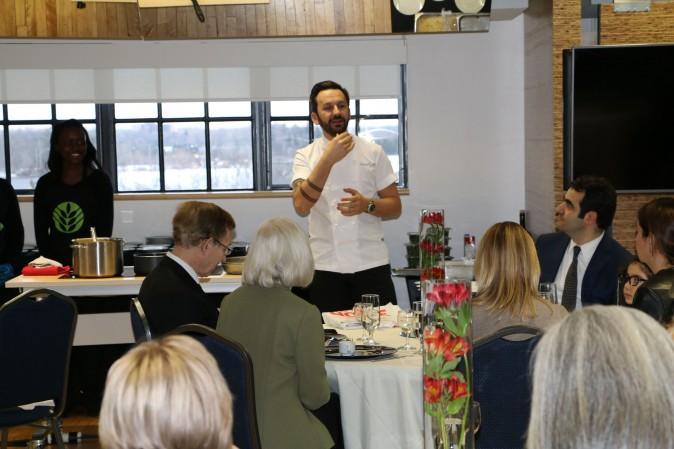OTTAWA—Instead of baking a cake for Canada’s 150th birthday, executive chef Ismet Saz had another treat for guests at Turkish Cuisine Night, co-hosted recently in Ottawa by the Embassy of Turkey and the Canada Agriculture and Food Museum in honour of Canada’s sesquicentennial.
Owner of the Toi Restaurant in Istanbul, Saz is also a TV host and cookbook author who has taught culinary classes at two Istanbul universities and worked with well-known chefs including Gordon Ramsay.

Chef Ismet Saz explains some of the finer points of Turkish cooking. Courtesy of Turkish Consulate, Toronto






